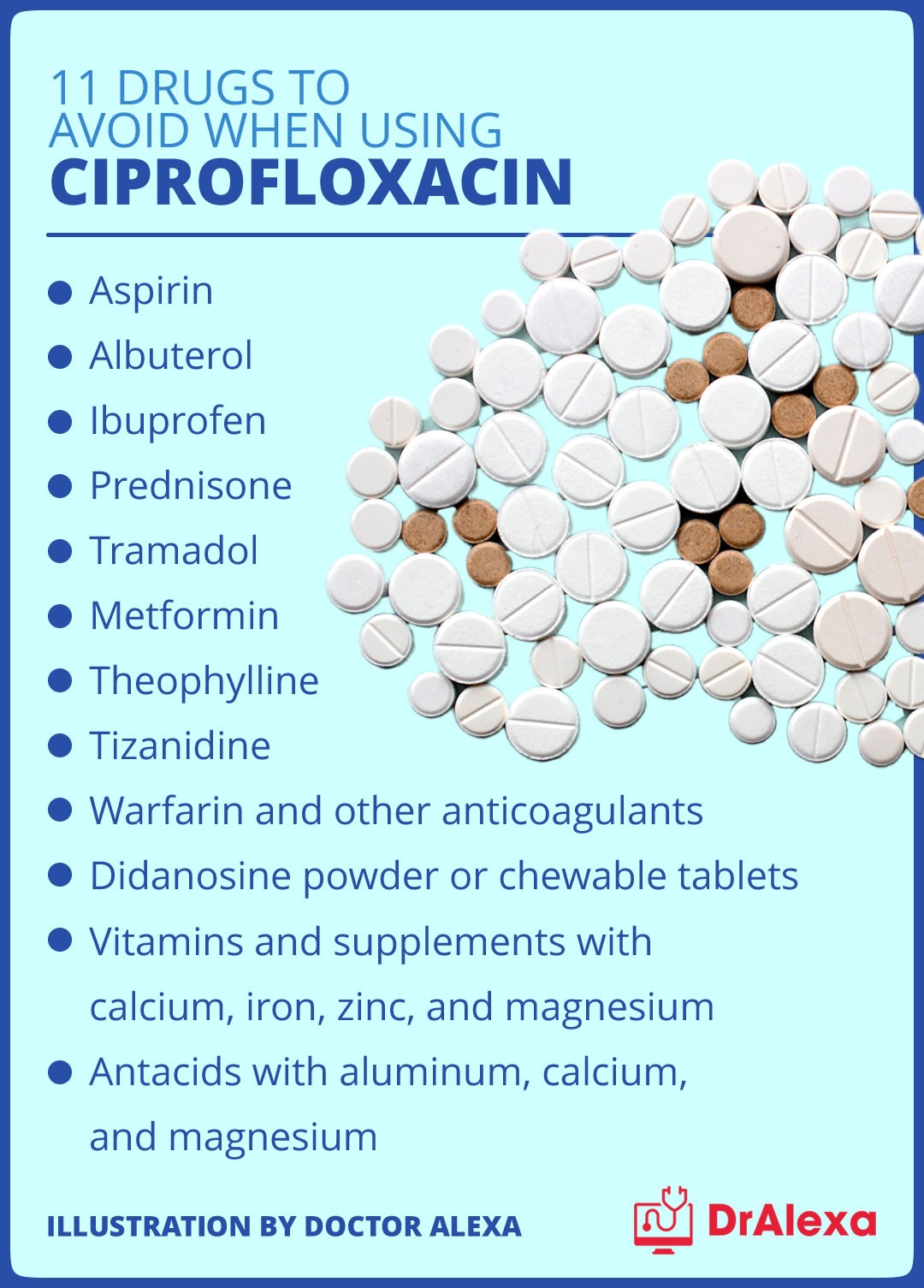
Contents
Cipro, XR (ciprofloxacin) vs. Keflex (cephalexin)
Cipro (ciprofloxacin) is a fluoroquinolone antibiotic used to treat bacterial infections by inhibiting DNA reproduction and repair. Other fluoroquinolones include levofloxacin, ofloxacin, gatifloxacin, norfloxacin, moxifloxacin, and trovafloxacin.
Keflex (cephalexin) belongs to the cephalosporin class of antibiotics. It acts similar to penicillin, preventing bacteria from forming and multiplying in the cell wall. This can lead to the destruction of the cell wall, making it impossible for bacteria to survive. Bacteria susceptible to cephalexin include Staphylococcus aureus, Streptococcus pneumoniae, Haemophilus influenzae, E. coli, and others.
Uses for Cipro and Keflex
Cirpo uses
Cipro and Cipro XR are prescribed to treat various bacterial infections including:
- Skin infections
- Lung or airway infections (e.g., TB, pneumonic and septicemic plague)
- Bone and joint infections
- Urinary tract infections caused by certain bacteria like E. coli
- Infectious diarrheas caused by E. coli, Campylobacter jejuni, and Shigella bacteria
- Anthrax patients with fever and low white blood cell counts, and intra-abdominal infections
- Typhoid fever
- Cervical and urethral gonorrhea
- Chronic bacterial prostatitis
- Acute uncomplicated cystitis
Infections that should not be treated with Cipro
Fluoroquinolones like Cipro should not be used to treat certain infections, including:
- Uncomplicated urinary tract infections (UTI)
- Acute bacterial exacerbation of chronic bronchitis
- Acute bacterial sinusitis
Keflex uses
Cephalexin is used to treat infections caused by bacteria susceptible to its effects, including:
- Middle ear infections (otitis media)
- Tonsillitis
- Throat infections
- Laryngitis
- Bronchitis
- Pneumonia
- Urinary tract infections (UTIs)
- Skin infections
- Bone infections
Side effects of Cipro vs. Keflex
Cipro side effects
The common side effects of Cipro and Cipro XR include:
Serious side effects of Cipro
Cipro and Cipro XR, along with other fluoroquinolones, can cause serious side effects such as tendonitis and tendon rupture, especially in the Achilles tendon. These antibiotics can also worsen muscle weakness in individuals with myasthenia gravis. Other serious side effects include anaphylaxis (a rare allergic reaction), peripheral neuropathy, central nervous system effects, hyperglycemia, Clostridium difficile-associated diarrhea (CDAD), abnormal heart beats, liver dysfunction, stroke, convulsions, toxic epidermal necrolysis, Stevens-Johnson syndrome, vasculitis, allergic pneumonitis, interstitial nephritis, acute kidney failure, hepatitis, jaundice, liver failure, anemia, leukopenia, cardiac arrest, and respiratory failure. Cipro and Cipro XR should be avoided in children and adolescents under 18 years of age, and they can also cause an overgrowth of C. difficile, leading to inflammation of the colon.
Keflex side effects
The common side effects of cephalexin include:
Cephalexin can cause rare but serious reactions like seizures, severe allergic reactions, and low platelet or red blood cell count. It may also cause pseudomembranous colitis, an inflammation of the colon caused by an overgrowth of Clostridium difficile.
Dosages of Cipro vs. Keflex
Cipro dosage
The recommended oral dose for adults is 250-750 mg (immediate release tablets) every 12 hours or 500-1000 mg (extended release tablets) every 24 hours. The usual intravenous dose is 200-400 mg every 8-12 hours. Cipro is available in various strengths and formulations.
Keflex dosage
The dose of cephalexin for adults is 1 to 4 grams in divided doses. Children are treated with 25-100 mg/kg/day in divided doses. The dosing interval may be every 6 or 12 hours depending on the type and seriousness of the infection. Keflex is available in tablets, capsules, and powder for suspension.
Drug interactions with Cipro and Keflex
Cipro drug interactions
Ciprofloxacin can interact with various medications, including theophylline, tizanidine, iron salts, antacids, warfarin, sevelamer, diabetic medications, sildenafil, and sunblock. It can also worsen low blood glucose levels when combined with sulfonylureas. Cipro can cause sensitivity to sunlight and should be used with caution in diabetic patients.
Keflex drug interactions
Cephalexin may reduce the effectiveness of BCG and typhoid vaccines, and should not be combined with them unless there are no other options.
Safety of taking Cipro or Keflex during pregnancy or breastfeeding
Cipro safety
Cipro is excreted in breast milk, so caution should be exercised while breastfeeding.
Keflex safety
Keflex should be avoided during pregnancy or breastfeeding due to unknown safety.
Summary
Cipro and Keflex are both antibiotics used to treat bacterial infections, but they have different spectra of activity. Cipro is effective against a broad range of bacteria, while Keflex is mainly used for respiratory and skin infections. Both medications can cause similar side effects, but Cipro has a higher risk of serious adverse reactions. They also both carry the risk of C. difficile infection and pseudomembranous colitis, which can cause severe diarrhea. It is important to consult a healthcare professional before starting any antibiotic treatment.


